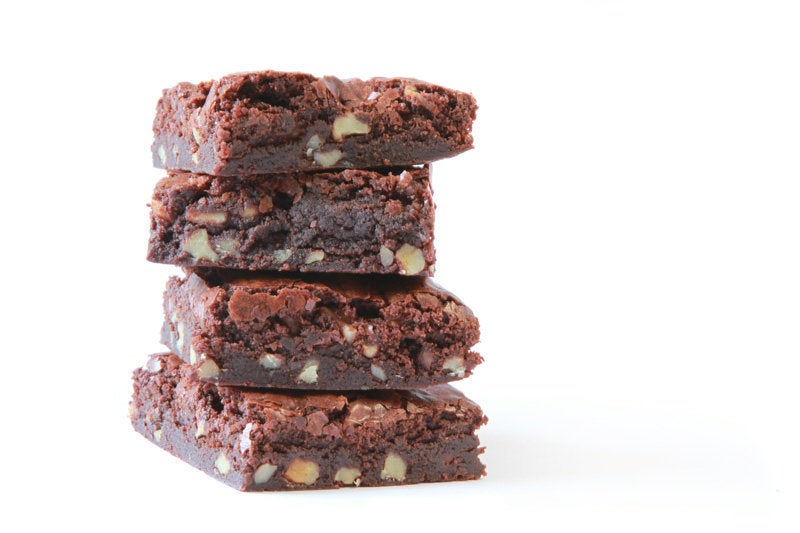
This piece was originally published by Berkeley Wellness.
Fad diets tend to have lots of very restrictive or complex rules, which give the impression that they carry scientific heft, when, in reality, the reason they often work (at least in the short term) is that they simply eliminate entire food groups, so you automatically cut out calories. Moreover, the rules are almost always hard to stick to and, when you stop, you regain the lost weight.
Rather than rely on such gimmicks, here we present 18 evidence-based keys for successful weight management. You don’t have to follow all of them, but the more of them you incorporate into your daily life, the more likely you will be successful at losing weight and—more important—keeping the weight off long term. Consider adding a new step or two every week or so, but keep in mind that not all these suggestions work for everyone. That is, you should pick and choose those that feel right for you to customize your own weight-control plan. Note also that this is not a “diet” per se and that there are no forbidden foods.
1. Start with a healthful diet.
That means a diet that's rich in vegetables, fruits, whole grains, and legumes and low in refined grains, sugary foods, and saturated and trans fats. You can include fish, poultry, and other lean meats, and dairy foods (low-fat or nonfat sources are preferable to save calories). Aim for 20 to 35 grams of fiber a day from plant foods, since fiber helps fill you up and slows absorption of carbohydrates. A good visual aid to use is the USDA’s MyPlate, which recommends filling half your plate with vegetables and fruits. Grains (preferably whole grains) and protein foods should each take up about a quarter of the plate. For more details, see 14 Keys to a Healthy Diet.
2. Keep an eye on portions.
You can eat all the broccoli and spinach you want, but for higher-calorie foods, portion control is the key. Check serving sizes on food labels—some relatively small packages contain more than one serving, so you have to double or triple the calories, fat, and sugar if you plan to eat the whole thing. Popular “100-calorie” food packages do the portion controlling for you (though they won’t help much if you eat several packages at once).
3. Eat mindfully.
This involves increasing your awareness about when and how much to eat using internal (rather than visual or other external) cues to guide you. Eating mindfully means giving full attention to what you eat, savoring each bite, acknowledging what you like and don’t like, and not eating when distracted (such as while watching TV, working on the computer, or driving). Such an approach will help you eat less overall, while you enjoy your food more. Research suggests that the more mindful you are, the less likely you are to overeat in response to external cues, such as food ads, 24/7 food availability, and super-sized portions.

4. Eat slowly, chew well.
A component of mindful eating, this allows more time for satiety signals to reach the brain (it takes about 20 minutes), so slow eaters tend to feel more full and eat less. The process of chewing itself may also stimulate satiety signals. In addition, eating slowly makes you more aware of the smell, taste, and texture of the foods, which can lead to greater satisfaction with fewer calories. Keep in mind also that the most pleasure often comes from the first few bites of a food; after that, it’s the law of diminishing returns. Thus, you should focus on those first few tastes of chocolate, cake, or other indulgences, as this may be enough to satisfy. For gadget lovers, the HAPIfork ($99) is an electronic fork that vibrates if you don’t pause long enough between bites.
5. Don’t rely on willpower.
Instead, control your “food environment” so that you don’t unconsciously overfill your plate and eat when you’re not hungry. That means, for example, not having junk foods at home or at least keeping them out of sight (such as on a top shelf or in the back of the fridge)—and changing your routines so you don’t regularly encounter temptations (such as avoiding the office pantry between meals if it has enticing foods and driving a route that doesn’t take you past your favorite food places). Use smaller plates, bowls, cups, and utensils—you may even want to invest in portion-controlled plates (that delineate what reasonable serving sizes are) or portion-control devices (that allow you to measure your food directly on the plate); many different kinds are available online. Portion out snacks into small bowls or bags; don’t eat from large bags or boxes. You may not have control over everything in your food environment, but being aware of hidden food triggers and traps may be enough to keep you from overeating.
6. Identify emotional triggers that may be making you overeat.
For example, you may eat more when you are stressed, depressed, upset, angry, lonely, or even happy and excited. To distinguish between real hunger and emotional eating, rate your hunger/fullness levels before, during, and after eating on a scale of 1 to 10, with 1 being “beyond hungry” or “starving” (with associated headaches, lightheadedness, and weakness) and 10 being “beyond full” (as in after-Thanksgiving-meal stuffed). Ideally you should eat when you are at level 3 (hungry but not yet uncomfortable) and stop at level 7 (full and satisfied). If you often eat for reasons other than hunger, find pleasurable non-food-related activities that you can do instead, such as going for a brisk walk or run.
7. Go for volume (low-energy-dense foods).
Eating foods low in energy density—that is, with fewer calories relative to their weight and volume—increases satiety, so you are likely to fill up on fewer calories. This well-tested concept was first developed by Barbara Rolls, PhD, at Pennsylvania State University in her well-regarded Volumetrics eating plan. In general, the best way to lower the energy density of your diet is to eat more foods that have a high water and high fiber content (notably fruits, vegetables, broth-based soups, and cooked whole grains) in place of low-moisture or high-fat foods (such as cheese, crackers, cookies, and fried potatoes). Incorporate more of these foods in recipes—add more vegetables to soups, stews, and pasta dishes, for example; fill sandwiches and wraps with lots of lettuce, chopped cucumbers, and grated carrots; top whole grain pizzas with more vegetables and less cheese. Snack on popcorn and grapes instead of raisins (for the same 120 calories, you can eat more than a cup of grapes compared to only 1/4 cup of raisins).

8. Get adequate protein (and include some with all meals).
There’s evidence that protein increases satiety more than carbohydrates do. Protein also helps limit muscle loss during weight loss. Look for sources of lean protein (such as beans and other legumes, white-meat poultry, and low-fat or nonfat dairy) or those also rich in healthy fats (such as fish, nuts, and soy foods). Some research suggests that distributing your protein throughout the day also helps in weight loss, rather than eating the bulk of it at, say, dinnertime. According to a 2015 paper in theAmerican Journal of Clinical Nutrition, higher-protein diets that include at least 25 grams of protein at each meal may reduce appetite and thus body weight, compared with lower-protein diets. However, people with or at high risk for kidney disease—and that includes many older people—should be careful not to consume excessive amounts of protein.
9. Eat regularly (don’t skip meals) and choose healthful low-calorie snacks.
Many people find that going longer than a few hours without food makes them more likely to overeat later (often on high-calorie treats). Find a meal-timing pattern that works best for you. If you eat between meals, plan ahead for healthful “mini-snacks” (100 to 200 calories), such as a small container of low-fat yogurt with a handful of berries; two tablespoons of hummus with a cup of baby carrots or sliced bell peppers; a slice of cheese or two thin slices of turkey on half a whole-grain pita; an ounce (small handful) of nuts; or a tablespoon of peanut butter and a banana.
10. Limit variety at meals.
Variety in your overall diet is important to ensure that you get a range of nutrients and other substances that contribute to good health. But having too many choices at once can lead to overconsumption (the “smorgasbord effect”) because foods with different flavors and sensory qualities whet the appetite, even if you are physically satiated—which is why there always seems to be “room for dessert.” It’s also easier to overfill your plate when you have a large number of choices. On the other hand, you’re likely to eat less if you have less variety, since foods similar in taste and texture dull the palate (a phenomenon called sensation-specific satiety). Be especially careful at all-you-can-eat buffets and parties. Scan the whole array of foods before making your selection, choose no more than three or four items that most appeal to you, and make only one trip. Using smaller plates also helps limit your choices.
11. Don’t drink your calories.
Beverages are not as satiating as solid foods, and people usually do not compensate for liquid calories by eating less food. It’s okay to drink milk but otherwise stick with water or other noncaloric beverages like tea and coffee (watch the cream and sugar). Choose whole fruits over juice. What about diet beverages? The jury is still out on whether they help with weight loss. The proposed 2015 U.S. Dietary Guidelines do not recommend sugar substitutes, citing a lack of evidence that they help in long-term weight loss. To liven up water, try a squeeze of lemon or lime or other fruit essence. If you drink alcoholic beverages, be aware of their calories (more than you may think) and that alcohol can have a disinhibiting effect on eating control.

12. Cook at home often.
That allows you to eat more whole foods and control how much oil, sugar, and other high-calorie ingredients you use. Studies have shown that people tend to eat more when they eat out—though you must still be careful to limit portion sizes at home. If cooking from recipes, look for healthy lower-calorie ones that include nutrition analyses, and stick to the serving sizes. Be aware also that just as restaurant portions have ballooned in recent years, recipe serving sizes have also been on the increase.
13. When eating out, follow these simple rules.
Take advantage of calorie listings on menus (or online beforehand) to find lower-calorie options, don’t order anything that’s been super-sized, and consider sharing entrées (or asking for half to be wrapped to take home before you start eating). Or have an appetizer or salad as your main dish. Reading over the whole menu before you order and asking questions of your server or the chef can help steer you toward more healthful, lower-calorie options. Request that dishes be prepared with no or minimal butter, oil, or other high-fat ingredients, and ask for salad dressings on the side so you can control how much you use. And be aware of the menu “tricks” that restaurants use to boost sales—often of cheaper and less-healthful foods.
14. Allow for (controlled) indulgences.
Most people find foods high in fat and sugar pleasurable, since they activate the body’s “reward system” (which releases chemicals in the nervous system relating to pleasure). Overly restricting such foods (or any other types of food you crave) can be counterproductive since it can increase your desire for them and lead to bingeing. An occasional treat is fine, as long as it doesn’t tip the scale with calories. You might, for instance, have a small daily treat or save up for some treats on weekends. On the other hand, some people can’t eat just a little and may be better off avoiding hard-to-resist foods altogether.
15. Keep a food diary.
Studies, including one in the Journal of the Academy of Nutrition and Dietetics, have found that dieters who regularly record what they eat lose more weight than those who don’t. It doesn’t matter how you do it—in a notebook, on the computer, or with an app on your phone—as long as you record your intake consistently and honestly (including even condiments and tastings you may take while cooking). This simple act makes you more accountable for what you eat and helps you see patterns in your eating habits that may be contributing to weight gain.
16. Get enough sleep.
An often overlooked factor in body weight may be your sleep habits. Though the optimal amount of sleep varies from person to person, too little sleep (fewer than six hours a night in one study) has been linked to weight gain because it may affect appetite hormones and lead to increased hunger and food intake, decreased calorie burning, and increased fat storage.
17. Consider weighing yourself regularly—at least once a week.
This increases self-awareness and can provide encouragement if the numbers are going in the right direction—or it can motivate you to get back on track if you detect an upward trend. A 2014 study in PLOS ONE of 40 overweight people found that more frequent self weigh-ins were associated with greater weight loss and that going more than a week without stepping on the scale was associated with weight gain. Regular self-weighing is a particularly effective strategy for maintaining long-term weight loss, according to the National Weight Control Registry, which tracks people who have successfully lost and kept weight off. Whether you weigh yourself and how frequently is a personal decision, however. Some people get discouraged by small fluctuations that occur over the course of a day or several days (which reflect normal shifts in fluid levels, rather than changes in body fat). Keep in mind also that weight is not everything: Another good—and sometimes better—gauge of weight-loss success is to measure your waist and other body areas, such as your hips and thighs.
18. Set realistic goals and have a realistic body image.
Just as weight tends to creep up over time, shedding excess pounds takes time. Don’t expect to be able to lose 10 pounds a week (any diet that says you can is counting on water losses, not fat loss). Small and steady losses—about one to two pounds a week—usually win the race in the long term. For most people, losing just 5 to 10 percent of body weight will provide health benefits. Also keep in mind that, depending on your body type and genetics, you may never be able to get back to your high school or college weight. And if you and your family members tend to have a certain body shape (like a pear, for example), weight loss will result in overall slimming but won’t reshape your body.
